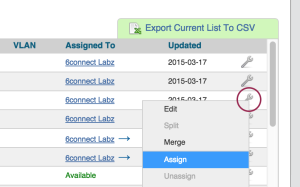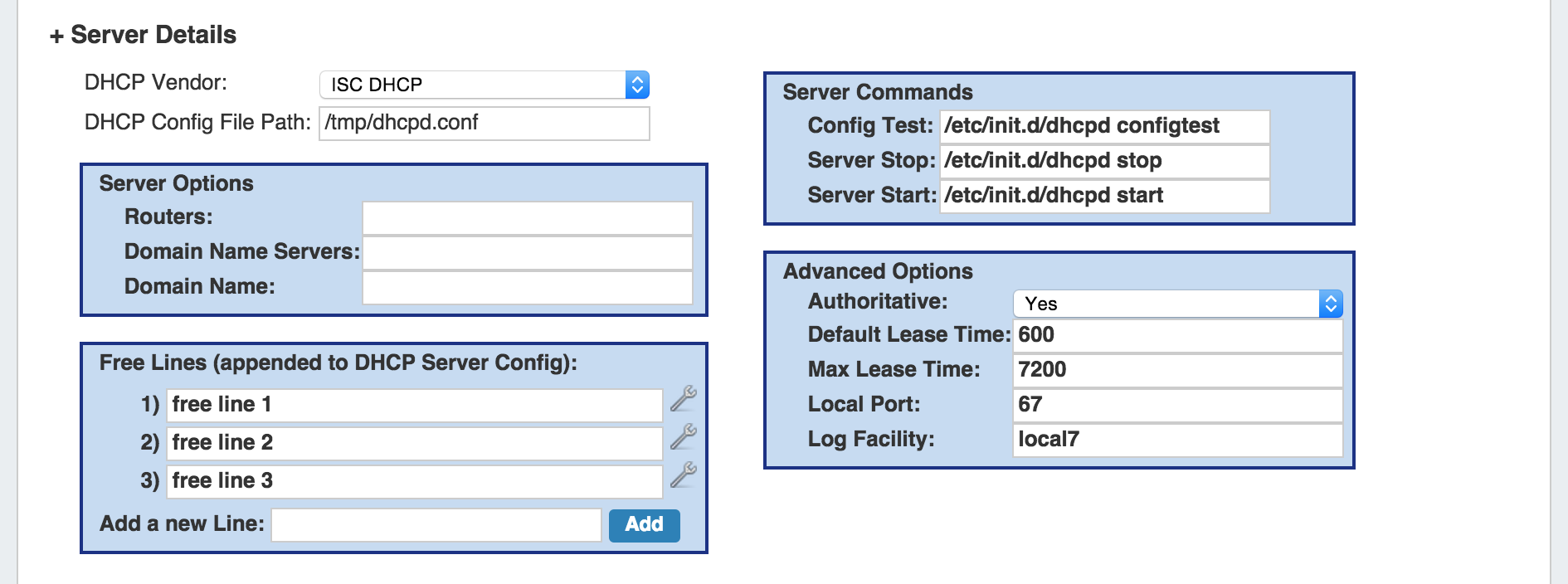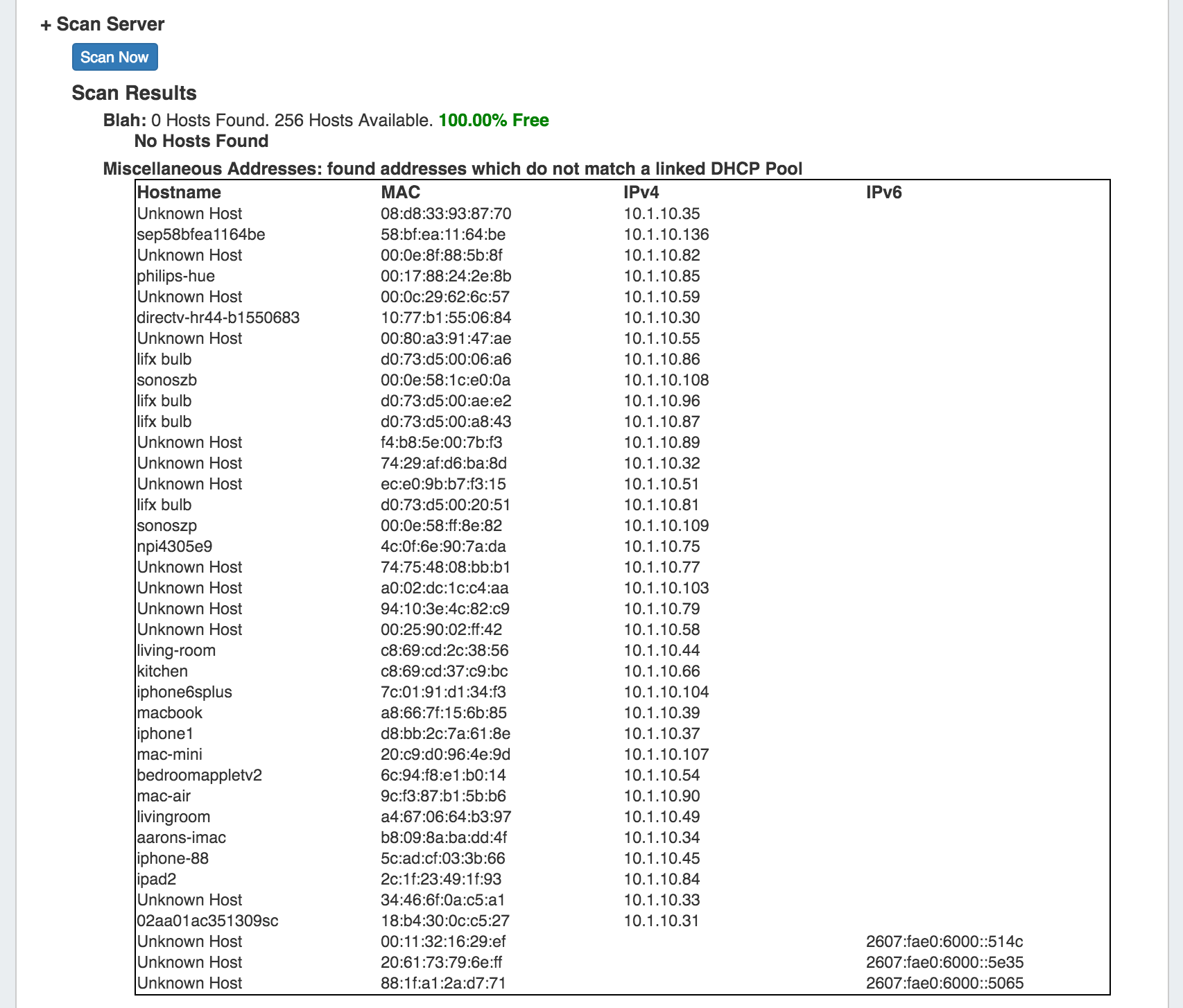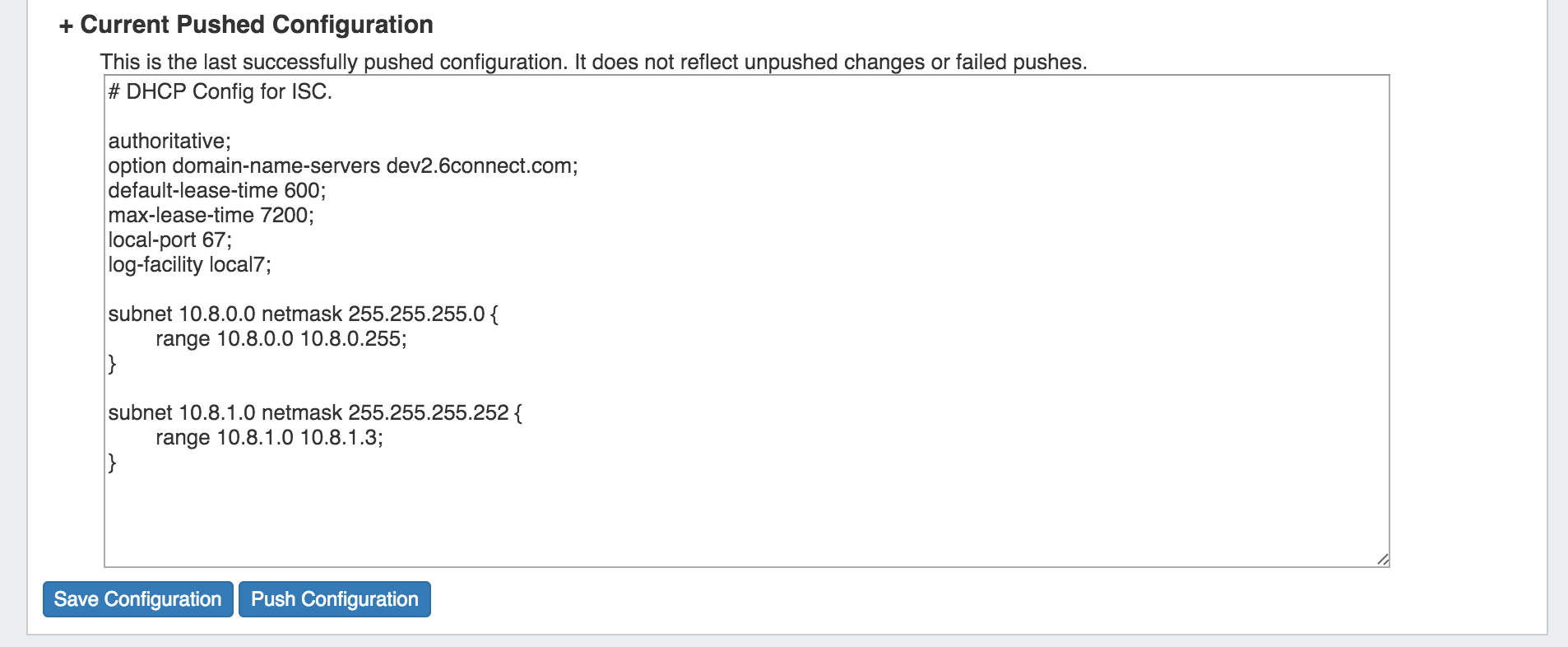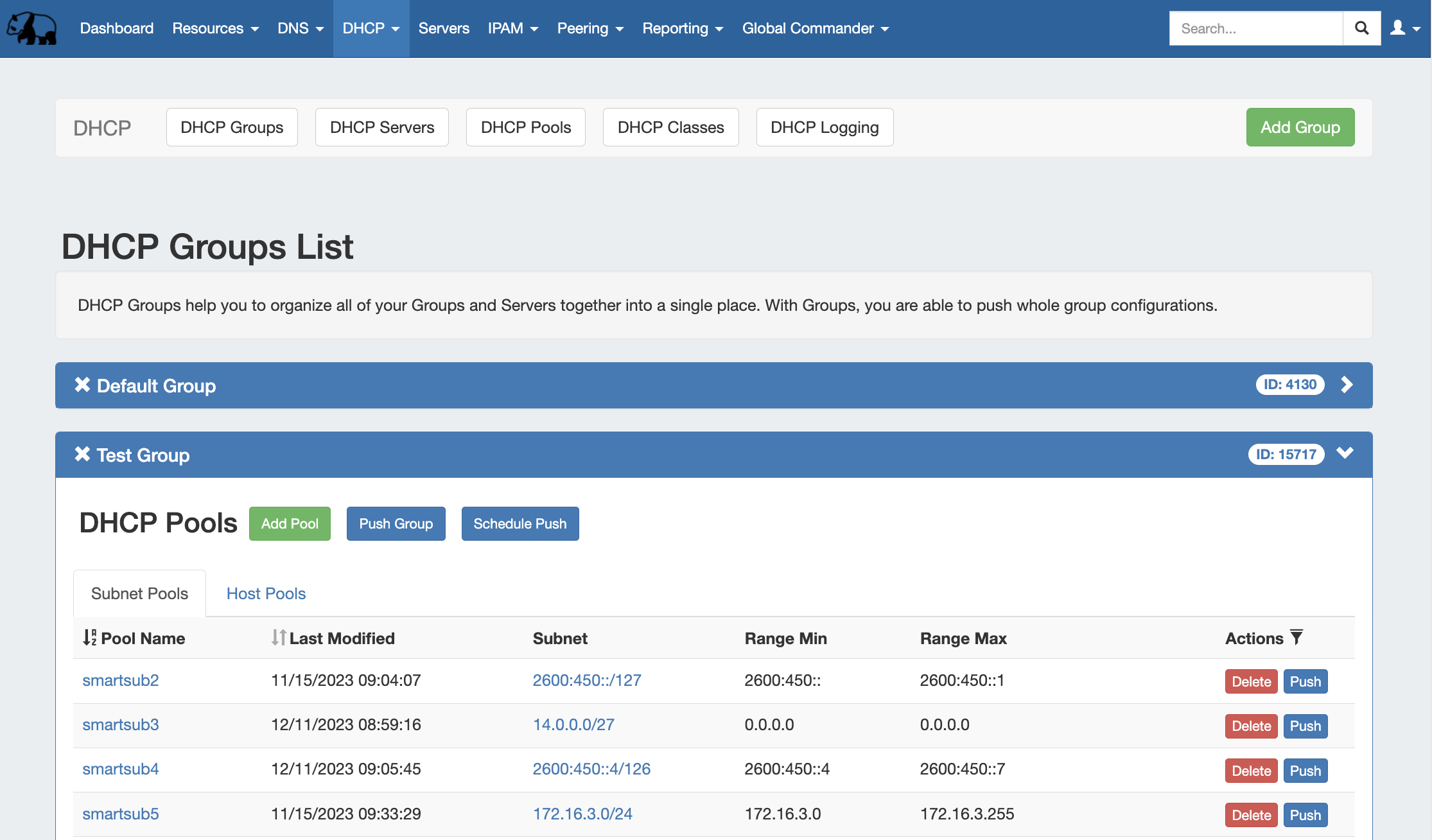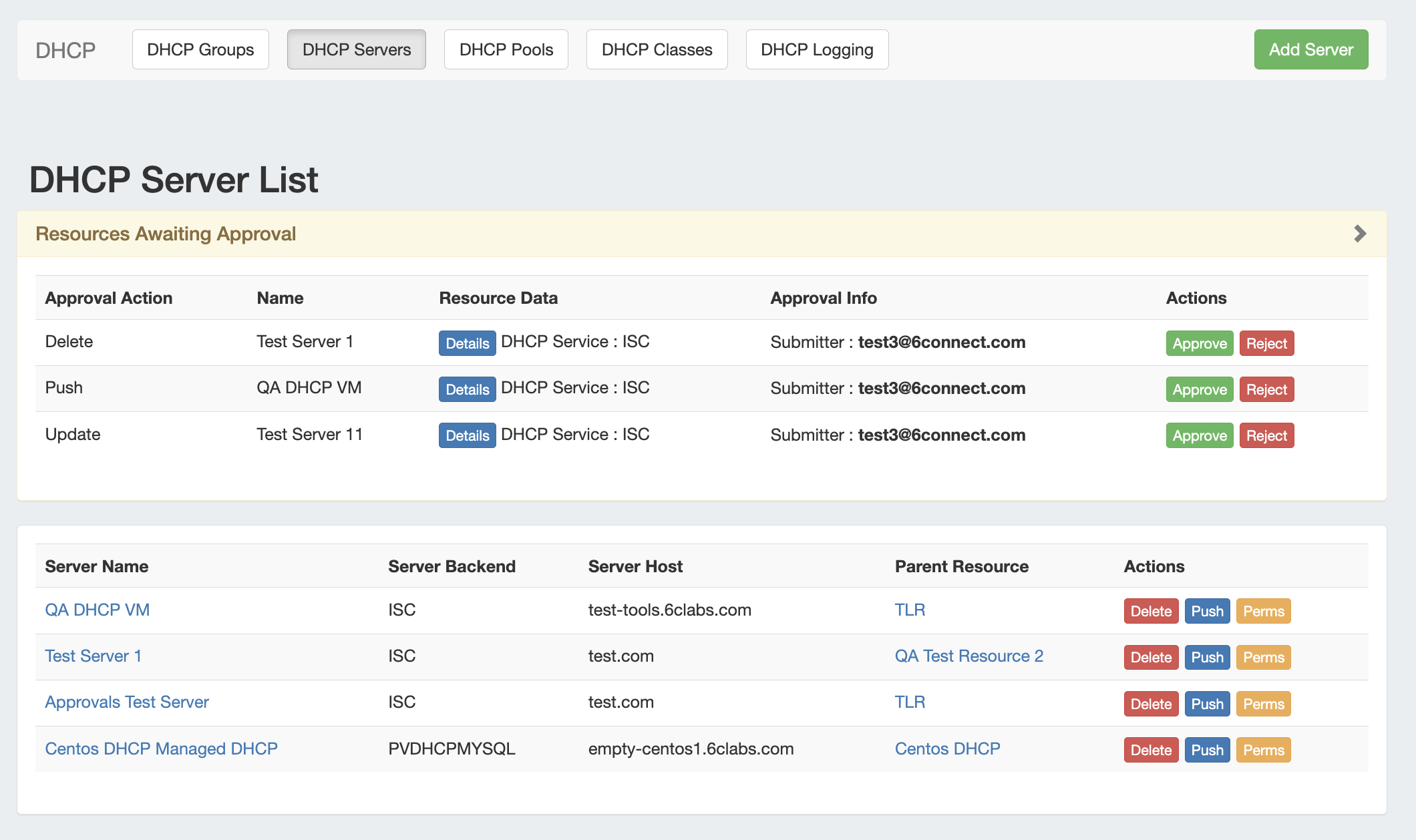| HTML |
|---|
<div id="google_translate_element"></div> <script type="text/javascript"> function googleTranslateElementInit() { new google.translate.TranslateElement({pageLanguage: 'en'}, 'google_translate_element'); } </script> <script type="text/javascript" src="//translate.google.com/translate_a/element.js?cb=googleTranslateElementInit"></script> |
The DHCP Tab
...
The DHCP Tab provides an overview of DHCP servers currently existing in ProVision, and links to the Resource pages for those servers. In ProVision, DHCP server configurations are tied into the Resource Manager system, so it is essential to associate servers with the proper parent Resource.
| Table of Contents |
|---|
Adding DHCP Servers
To add a DHCP Server to ProVision from the DHCP Tab, click on the "Add a DHCP Server" link. The create server dialog area will open.
Type the server name, then under "Select Customer", choose the resource to which the DHCP server belongs. This creates a hierarchical relationship, with the server as a child resource under the selected parent.
When you are done providing this information, click on the green "+" icon to add the server.
Working with the DHCP Gadget
Before You Begin:
Attach / Enable the DHCP Gadget
Verify that the DHCP Gadget is attached to the Resource Section. Then, you can enable the gadget by selecting the radio button next to "On", and click "Update".
Once enabled, the DHCP Management Gadget will show sections for Connection Configuration, Server Details, Scan Server, DHCP Pools, Create a New DHCP Pool, and Current Pushed Configuration.
These sections will be reviewed in detail further on in this section.
Defining DHCP Scopes - Create DHCP Aggregates
In order to use DHCP functions and add DHCP Pools, the IP blocks need to be defined in the IPAM section to create a DHCP specific aggregate.
Under the IPAM tab, select "Add Aggregate". It will open the Add Aggregate dialog.
Fill in the aggregate information, and select the "DHCP Aggregate" checkbox option as outlined below. "Allow Sub-Assignment" will be selected automatically,so that smaller blocks may be assigned to DHCP pools.
This will ensure the block is automatically added to the DHCP Available Resource, and thus usable when building DHCP Server Configurations and defining DHCP Pools.
When done, click "Add Aggregate"
Using an Existing Aggregate
If you would like to use an existing aggregate or part of an existing aggregate, you simply need to "assign" the block to the Resource Holder "DHCP Available".
1) From the IPAM Manage screen, click on the Action Menu, then select "Assign".
2) In the Assign Block dialog, scroll until you find "DHCP Available". Select it, then click on "Assign Block".
Once the IP block is assigned to DHCP Available, it will be available to assign to a DHCP Pool via the DHCP Gadget.
Managing DHCP Server Configurations
Once DHCP functions are enabled for a Resource Section, you will be able to manage configurations per Resource by expanding the relevant areas on the Resource's Entry page.
Connection Configuration
In this gadget area, you may enter in the information that will be used for ProVision to communicate to the DHCP Server.
Server Details
Server details and advanced options may be entered under this portion of the gadget.
| Info | ||
|---|---|---|
| ||
A note on the Server Command: Config Test option: This command is run after the newly-written DHCP Config file has been transferred to the server but before the server is restarted. Due to the wide variety of DHCP install configurations that can arise on different systems, it is best if the Config Test option is as explicit as possible. For example: sudo /usr/sbin/dhcpd -t -cf /etc/dhcp/dhcpd.conf This command explicitly requests the DHCP daemon start in test-only mode (-t) with a specific config file (-cf). This config file should be the location supplied in the "DHCP Config File Path" section. |
Scan Server
Scan Server provides a "Scan Now" button, which scans the DHCP server and returns found IPs under DHCP Pools.
The returned IPs are divided by Pools and IPv4/IPv6. Returned fields include MAC address, IP address, and name. The percentage utilization of IP space out of the available DHCP Pool space is also included at the top of the list.
If the scan is unable to be completed, an error message will appear in the DHCP Management section.
DHCP Pools
In this area, the admin can specify what DHCP Pools are linked to the DHCP server. This includes any host reservations as well as DHCP Pools as defined in the next section.
Use the Action menu to Link to Server, Delete, or Remove Link from Pools.
Additional edits may be made to pools by clicking on the Pool name. This allows the Pool name, assignment, and lines to be changed. Be sure to hit "Save" after making changes.
DHCP Pool Search:
Both Linked and Existing DHCP pools have field-specific search options to filter the DHCP pool list(s). Select the search term type from the dropdown list, type the search term in the search box, then hit "Search".
For both Linked and Existing pools, search terms include:
Name: The full or partial name of the pool (ex: "Lab")
MAC: The full (ex: 00:11:22:33:44:55:66:77) or partial (:22) MAC address, for pools that were created as "Host" type. MAC address searches must include a colon.
IP: Search by IP Block by providing the CIDR assigned to the pool. (ex: 10.0.0.0/24)
For Existing Pools, additional filter terms may be included to further filter the IP search by Region or assigned Resource.
After entering your search terms, click "Search", and the pool list will filter to the results.
Create a New DHCP Pool - Subnets
When Assigning a Subnet (via dropdown) the IP Assignment selection will pull the data from the DHCP Available blocks that you defined earlier. You can use either a Smart or Direct assignment depending on your preference. For Smart Assign pool creation, existing IP Rules may be applied to reserve additional addresses out of the pool range. To create an IP Rule, see IPAM Rules.
| Info | ||
|---|---|---|
| ||
For DHCP Pools, ProVision automatically reserves the first and last address of the pool for Gateway and Broadcast addresses, respectively. If an additional IP Rule is applied, the rule will begin with the second address in the block. For example: if a DHCP Pool is created using 10.0.0.64/29 with an IP Rule of "Reserve First Three", the resulting pool range would be 10.0.0.68 through 10.0.0.70, as the first four as well as the final address would be reserved. |
Enter the name of the Pool / Subnet, and select the assignment criteria:
For Smart Assign: select IPv4 / IPv6, Mask, then optional Region, Resource assignment, Domain - VLAN, and IP Rules criteria, add free lines if desired, then click "Add Pool".
For Direct Assign: select IPv4 / IPv6 and enter the block in CIDR format, add free lines if desired, then click "Add Pool".
Create a New DHCP Pool - Host
When reserving Hostname/MAC data, change the Dropdown to "Host". This will also give you an option to assign from an existing DHCP block (smart assign) or a specific IP address (direct assign).
Enter the name of the Hostname and MAC address, then select the assignment criteria:
For Smart Assign: select IPv4 / IPv6, then optional Region, Resource assignment, Domain - VLAN, and IP Rule criteria, add free lines if desired, then click "Add Pool".
For Direct Assign: select IPv4 / IPv6 and enter the block in CIDR format, add free lines if desired, then click "Add Pool".
Current Pushed Configuration
Expanding "Current Pushed Configuration" allows you to view the detailed text (read-only) of the last sucessfully pushed configuration.
Current Pushed Configuration does not reflect any un-pushed changes or failed pushes.
Saving/Pushing DHCP Server Configurations
It is recommended that you save your configuration after changes. Save your changes by clicking the "Save Configuration" button at the bottom of the DHCP Management Gadget.
When you Push a Configuration (by clicking "Push Configuration") the configuration is automatically saved.
Permissions
DHCP Management integrates with ProVision's resource and permissions hierarchy, as well as the IP Management system. Individual DHCP servers can be assigned via Resource Permissions to different internal user groups, to be managed by only the appropriate parties.
Additional Information
Tab combines server management, group organization, and pool management under one tab.
The DHCP tab contains five sub-tabs: DHCP Groups, DHCP Servers, DHCP Pools, DHCP Classes, and DCHP Logging.
The DHCP Groups tab is where DHCP servers and pools are managed as a part of DHCP groups. The DHCP tab DHCP Groups List allows you to create, view, and manage groups of DHCP servers and pools. Using groups, you can configure and push selected combinations of pools at one time.
The DHCP Servers tab is only accessible to Admin users, and contains functions for adding, updating, and managing DHCP servers as well as scheduling server tasks. For Admin-level DHCP tasks, see Working with DHCP Servers.
The DHCP Pools tab lists all the pools created in ProVision able to be viewed by the user, in the same format as on the DHCP Groups page, but without the group organization. The Pool List allows you to view, add, delete, and push individual DHCP Host and Subnet Pools. Under a pool, you may specify and update IP assignments, ranges, reservations and optionally set BOOTP Vendor Extensions / DHCP Options to send to the DHCP server.
The DHCP Classes tab lists all the classes created in ProVision able to be viewed by the user. The Class List allows you to view, add, and delete DHCP Classes.
The DHCP Logging tab provides a link to ProVision's logging system, where you can filter to view DHCP-only logs.
| Table of Contents |
|---|
Permissions
DHCP Management integrates with the resource and permissions hierarchy, as well as the IP Management system. Individual DHCP servers can be assigned via resource permissions to different internal user groups, to be managed by only the appropriate parties.
DHCP Approvals
The Approvals module stores and queues DHCP actions made by selected User Groups, and sends those actions to a Pending Changes list for administrative review. Later, an administrator (or combination of administrators) can approve or reject these stored actions.
Approvals is primarily set up and managed via the Admin Approvals Tab. See the Admin Guide - Approvals Tab for details on setting up and using Approvals from the Administrative viewpoint.
In the DHCP Tab, a "Resources Awaiting Approval" module will display near the top of DHCP Groups, DHCP Servers, DHCP Pools Lists, and DHCP Pool pages, if a change has been submitted on that page that is pending approval.
Users who submitted a change for approval will see the details of their change request in this module.
Admin users with permissions to approve or reject the request will have the option to Approve or Deny the change.
Additional Information
See the following sections for detail on working within the DHCP Tab:
For more detail on advanced DHCP topics and the DHCP API, see API Module - DHCP.Children Display all true depth 1






